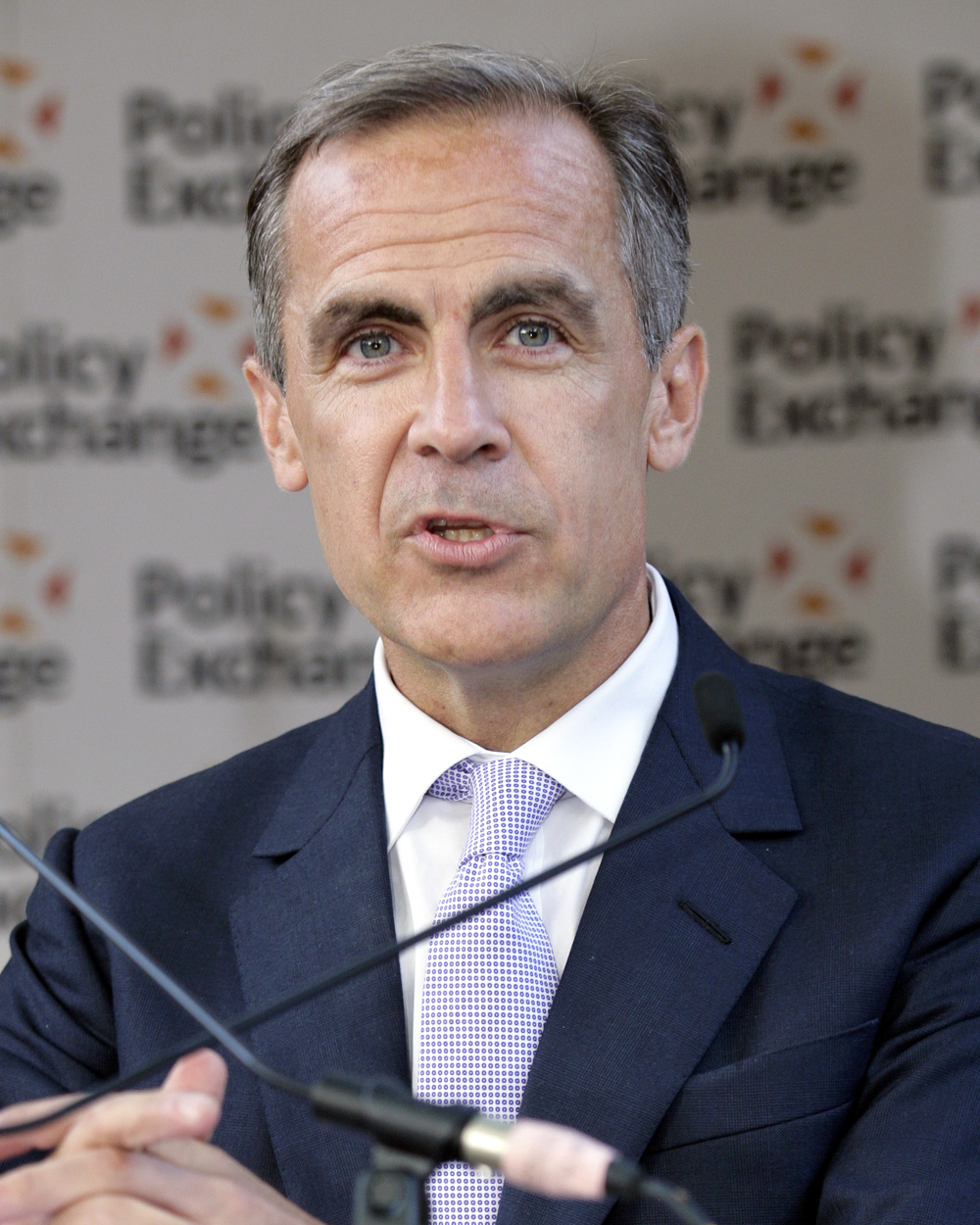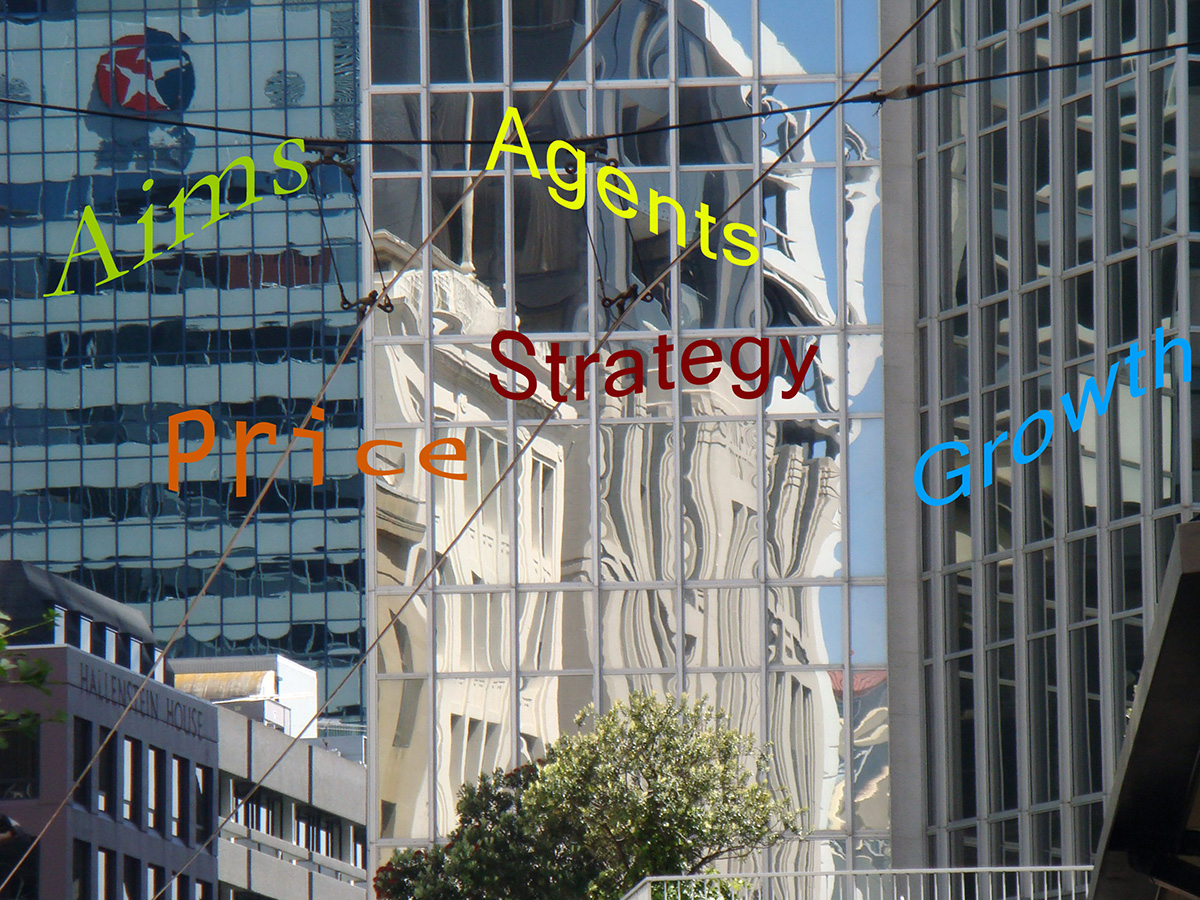 Each year the BBC hosts the Reith Lectures – a series of talks given by an eminent person in their field. This year’s lecturer is Mark Carney, former Governor of the Bank of England. His series of four weekly lectures began on 2 December 2020. Their topic is ‘How we get what we value’. As the BBC site states, the lectures:
Each year the BBC hosts the Reith Lectures – a series of talks given by an eminent person in their field. This year’s lecturer is Mark Carney, former Governor of the Bank of England. His series of four weekly lectures began on 2 December 2020. Their topic is ‘How we get what we value’. As the BBC site states, the lectures:
chart how we have come to esteem financial value over human value and how we have gone from market economies to market societies. He argues that this has contributed to a trio of crises: of credit, Covid and climate. And the former Bank of England governor will outline how we can turn this around.
 In lectures 2, 3 and 4, he looks at three crises and how they have shaped and are shaping what we value. The crises are the financial crisis of 2007–9, the coronavirus pandemic and the climate crisis. They have challenged how we value money, health and the environment respectively and, more broadly, have prompted people to question what is valuable for individuals and society, both today and into the future.
In lectures 2, 3 and 4, he looks at three crises and how they have shaped and are shaping what we value. The crises are the financial crisis of 2007–9, the coronavirus pandemic and the climate crisis. They have challenged how we value money, health and the environment respectively and, more broadly, have prompted people to question what is valuable for individuals and society, both today and into the future.
The questions posed by Carney are how can we establish what is valuable to individuals and society, how well are such values met by economies and how can mechanisms be improved to ensure that we make the best use of resources in meeting those values.
Value and the market
In the first lecture he probes the concept of value. He explores how economists and philosophers have tried to value the goods, services and human interactions that we desire.
First there is ‘objective value’ propounded by classical economists, such as Adam smith, David Ricardo and Karl Marx. Here the value of goods and services depends on the amount of resources used to make them and fundamentally on the amount of labour. In other words, value is a supply-side concept.
This he contrasts with ‘subjective value’. Here the value of goods and services depends on how well they satisfy wants – how much utility they give the consumer. For these neoclassical economists, value is in the eye of the beholder; it is a demand-side concept.
The two are reconciled in the market, with market prices reflecting the balance of demand and supply. Market prices provided a solution to the famous diamonds/water paradox (see Box 4.2 in Economics (10th edition) or Case Study 4.3 in Essentials of Economics (8th edition) – the paradox of ‘why water, which is essential for life, is virtually free, but diamonds, which have limited utility beyond their beauty, are so expensive.’ The answer is to do with scarcity and marginal utility. Because diamonds are rare, the marginal utility is high, even though the total utility is low.  And because water is abundant, even though its total utility is high, for most people its marginal utility is low. In other words, the value at the margin depends on the balance of demand and supply. Diamonds are much scarcer than water.
And because water is abundant, even though its total utility is high, for most people its marginal utility is low. In other words, the value at the margin depends on the balance of demand and supply. Diamonds are much scarcer than water.
But is the market balance the right balance? Are the values implied by the market the same as those of society? ‘Why do financial markets rate Amazon as one of the world’s most valuable companies, but the value of the vast region of the Amazon appears on no ledger until it’s stripped of its foliage and converted into farmland?’ – another paradox highlighted by Carney.
It has long been recognised that markets fail in a number of ways. They are not perfect, with large firms able to make supernormal profits by charging more and producing less, and consumers often being ill-informed and behaving impulsively or being swayed by clever marketing. And many valuable things that we experience, such as human interaction and the beauty of nature, are not bought and sold and thus do not appear in measures of GDP – one of the main ways of valuing a country.
 What is more, many of things that are produced in the market have side-effects which are not reflected in prices. These externalities, whether good or bad, can be substantial: for example, the global warming caused by CO2 emissions from industry, transport and electricity production from fossil fuels.
What is more, many of things that are produced in the market have side-effects which are not reflected in prices. These externalities, whether good or bad, can be substantial: for example, the global warming caused by CO2 emissions from industry, transport and electricity production from fossil fuels.
And markets reflect people’s biases towards the present and hence lead to too little investment for the future, whether in healthcare, the environment or physical and social infrastructure. Markets reflect the scant regard many give to the damage we might be doing to the lives of future generations.
What is particularly corrosive, according to Carney, is the
drift from moral to market sentiments. …Increasingly, the value of something, some act or someone is equated with its monetary value, a monetary value that is determined by the market. The logic of buying and selling no longer applies only to material goods, but increasingly it governs the whole of life from the allocation of healthcare, education, public safety and environmental protection. …Market value is taken to represent intrinsic value, and if a good or activity is not in the market, it is not valued.
The drift from moral to market sentiments accelerated in the Thatcher/Regan era, when governments were portrayed as inefficient allocators, which stifled competition, innovation and the movement of capital. Deregulation and privatisation were the order of the day. This, according to Carney, ‘unleashed a new dynamism’ and ‘with the fall of communism at the end of the 1980s, the spread of the market grew unchecked.’
But this drift failed to recognise market failures. It has taken three crises, the financial crisis, Covid and the climate crisis to bring these failures to the top of the public agenda. They are examined in the other three lectures.
The Reith Lectures
Questions
- Distinguish between objective and subjective value.
- If your income rises, will you necessarily be happier? Explain.
- How is the concept of diminishing marginal utility of income relevant to explaining why ‘A Christmas bonus of £1000 means less to Mark Zuckerberg then £500 does to someone on a minimum wage.’
- Does the use of social cost–benefit analysis enable us to use adjusted prices as a measure of value?
- Listen to lectures 2, 3 and 4 and provide a 500-word summary of each.
- Assess the arguments Mark Carney uses in one of these three lectures.
 The linked article below, by Evan Davis, assesses the state of economics. He argues that economics has had some major successes over the years in providing a framework for understanding how economies function and how to increase incomes and well-being more generally.
The linked article below, by Evan Davis, assesses the state of economics. He argues that economics has had some major successes over the years in providing a framework for understanding how economies function and how to increase incomes and well-being more generally.
Over the last few decades, economists have …had an influence over every aspect of our lives. …And during this era in which economists have reigned, the world has notched up some marked successes. The reduction in the proportion of human beings living in abject poverty over the last thirty years has been extraordinary.
With the development of concepts such as opportunity cost, the prisoners’ dilemma, comparative advantage and the paradox of thrift, economics has helped to shape the way policymakers perceive economic issues and policies.
These concepts are ‘threshold concepts’. Understanding and being able to relate and apply these core economic concepts helps you to ‘think like an economist’ and to relate the different parts of the subject to each other. Both Economics (10th edition) and Essentials of Economics (8th edition) examine 15 of these threshold concepts. Each time a threshold concept is used in the text, a ‘TC’ icon appears in the margin with the appropriate number. By locating them in this way, you can see their use in a variety of contexts.
But despite the insights provided by traditional economics into the various problems that society faces, the discipline of economics has faced criticism, especially since the financial crisis, which most economists did not foresee.
 Even Davis identifies two major shortcomings of the discipline – both beginning with ‘C’. ‘One is complexity, the other is community.’
Even Davis identifies two major shortcomings of the discipline – both beginning with ‘C’. ‘One is complexity, the other is community.’
In terms of complexity, the criticism is that economic models are often based on simplistic assumptions, such as ‘rational maximising behaviour’. This might make it easier to express the models mathematically, but mathematical elegance does not necessarily translate into predictive accuracy. Such models do not capture the ‘messiness’ of the real world.
These models have a certain theoretical elegance but there is now an increasing sense that economies do not evolve along a well-defined mathematical path, but in a far more messy way. The individual players within the economy face radical uncertainty; they adapt and learn as they go; they watch what everybody else does. The economy stumbles along in a process of slow discovery, full of feedback loops.
As far as ‘community’ is concerned, people do not just act as self-interested individuals. Their actions are often governed by how other people behave and also by how their own actions will affect other people, such as family, friends, colleagues or society more generally.
 And the same applies to firms. They will be influenced by various other firms, such as competitors, trend setters and suppliers and also by a range of stakeholders – not just shareholders, but also workers, customers, local communities, etc. A firm’s aim is thus unlikely to be simple short-term profit maximisation.
And the same applies to firms. They will be influenced by various other firms, such as competitors, trend setters and suppliers and also by a range of stakeholders – not just shareholders, but also workers, customers, local communities, etc. A firm’s aim is thus unlikely to be simple short-term profit maximisation.
And this broader set of interests translates into policy. The neoliberal free-market, laissez-faire approach to policy is challenged by the desire to take account of broader questions of equity, community and social justice. However privately efficient a free market is, it does not take account of the full social and environmental costs and benefits of firms’ and consumers’ actions or a fair distribution of income and wealth.
It would be wrong, however, to say that economics has not responded to these complexities and concerns. The analysis of externalities, income distribution, incentives, herd behaviour, uncertainty, speculation, cumulative causation and institutional values and biases are increasingly embedded in the economics curriculum and in economic research. What is more, behavioural economics is becoming increasingly mainstream in examining the behaviour of consumers, workers, firms and government. We have tried to reflect these developments in successive editions of our four textbooks.
Article
Questions
- Write a brief defence of traditional economic analysis (i.e. that based on the assumption of ‘rational economic behaviour’).
- What are the shortcomings of traditional economic analysis?
- What is meant by ‘behavioural economics’ and how does it address the concerns raised in Evan Davis’ article?
- How is herd behaviour relevant to explaining macroeconomic fluctuations?
- Identify various stakeholder groups of an energy company. What influence are they likely to have on the company’s behaviour?
- In an era of social media, web-based information and e-commerce, why might it be necessary to rethink the concept of GDP and its measurement?
- What is meant by an efficient stock market? Why may the stock market not be efficient?
 In the following article, Joseph Stiglitz argues that power rather than competition is a better starting point for analysing the working of capitalism. People’s rewards depend less on their marginal product than on their power over labour or capital (or lack of it).
In the following article, Joseph Stiglitz argues that power rather than competition is a better starting point for analysing the working of capitalism. People’s rewards depend less on their marginal product than on their power over labour or capital (or lack of it).
As inequality has widened and concerns about it have grown, the competitive school, viewing individual returns in terms of marginal product, has become increasingly unable to explain how the economy works.
Thus the huge bonuses, often of millions of pounds per year, paid to many CEOs and other senior executives, are more a reflection of their power to set their bonuses, rather than of their contribution to their firms’ profitability. And these excessive rewards are not competed away.
Stiglitz examines how changes in technology and economic structure have led to the increase in power. Firms are more able to erect barriers to entry; network economies give advantages to incumbents; many firms, such as banks, are able to lobby governments to protect their market position; and many governments allow powerful vested interests to remain unchecked in the mistaken belief that market forces will provide the brakes on the accumulation and abuse of power. Monopoly profits persist and there is too little competition to erode them. Inequality deepens.
According to Stiglitz, the rationale for laissez-faire disappears if markets are based on entrenched power and exploitation.
Article
Monopoly’s New Era Chazen Global Insights, Columbia Business School, Joseph Stiglitz (13/5/16)
Questions
- What are the barriers to entry that allow rewards for senior executives to grow more rapidly than median wages?
- What part have changes in technology played in the increase in inequality?
- How are the rewards to senior executives determined?
- Provide a critique of Stiglitz’ analysis from the perspective of a proponent of laissez-faire.
- If Stiglitz analysis is correct, what policy implications follow from it?
- How might markets which are currently dominated by big business be made more competitive?
- T0 what extent have the developments outlined by Stiglitz been helped or hindered by globalisation?
 Each year the BBC hosts the Reith Lectures – a series of talks given by an eminent person in their field. This year’s lecturer is Mark Carney, former Governor of the Bank of England. His series of four weekly lectures began on 2 December 2020. Their topic is ‘How we get what we value’. As the BBC site states, the lectures:
Each year the BBC hosts the Reith Lectures – a series of talks given by an eminent person in their field. This year’s lecturer is Mark Carney, former Governor of the Bank of England. His series of four weekly lectures began on 2 December 2020. Their topic is ‘How we get what we value’. As the BBC site states, the lectures: In lectures 2, 3 and 4, he looks at three crises and how they have shaped and are shaping what we value. The crises are the financial crisis of 2007–9, the coronavirus pandemic and the climate crisis. They have challenged how we value money, health and the environment respectively and, more broadly, have prompted people to question what is valuable for individuals and society, both today and into the future.
In lectures 2, 3 and 4, he looks at three crises and how they have shaped and are shaping what we value. The crises are the financial crisis of 2007–9, the coronavirus pandemic and the climate crisis. They have challenged how we value money, health and the environment respectively and, more broadly, have prompted people to question what is valuable for individuals and society, both today and into the future. And because water is abundant, even though its total utility is high, for most people its marginal utility is low. In other words, the value at the margin depends on the balance of demand and supply. Diamonds are much scarcer than water.
And because water is abundant, even though its total utility is high, for most people its marginal utility is low. In other words, the value at the margin depends on the balance of demand and supply. Diamonds are much scarcer than water. What is more, many of things that are produced in the market have side-effects which are not reflected in prices. These externalities, whether good or bad, can be substantial: for example, the global warming caused by CO2 emissions from industry, transport and electricity production from fossil fuels.
What is more, many of things that are produced in the market have side-effects which are not reflected in prices. These externalities, whether good or bad, can be substantial: for example, the global warming caused by CO2 emissions from industry, transport and electricity production from fossil fuels.  From Moral to Market Sentiments (lecture 1) (Video)
From Moral to Market Sentiments (lecture 1) (Video) From Moral to Market Sentiments (lecture 1) (Podcast)
From Moral to Market Sentiments (lecture 1) (Podcast) The linked article below, by Evan Davis, assesses the state of economics. He argues that economics has had some major successes over the years in providing a framework for understanding how economies function and how to increase incomes and well-being more generally.
The linked article below, by Evan Davis, assesses the state of economics. He argues that economics has had some major successes over the years in providing a framework for understanding how economies function and how to increase incomes and well-being more generally.  Even Davis identifies two major shortcomings of the discipline – both beginning with ‘C’. ‘One is complexity, the other is community.’
Even Davis identifies two major shortcomings of the discipline – both beginning with ‘C’. ‘One is complexity, the other is community.’ And the same applies to firms. They will be influenced by various other firms, such as competitors, trend setters and suppliers and also by a range of stakeholders – not just shareholders, but also workers, customers, local communities, etc. A firm’s aim is thus unlikely to be simple short-term profit maximisation.
And the same applies to firms. They will be influenced by various other firms, such as competitors, trend setters and suppliers and also by a range of stakeholders – not just shareholders, but also workers, customers, local communities, etc. A firm’s aim is thus unlikely to be simple short-term profit maximisation.